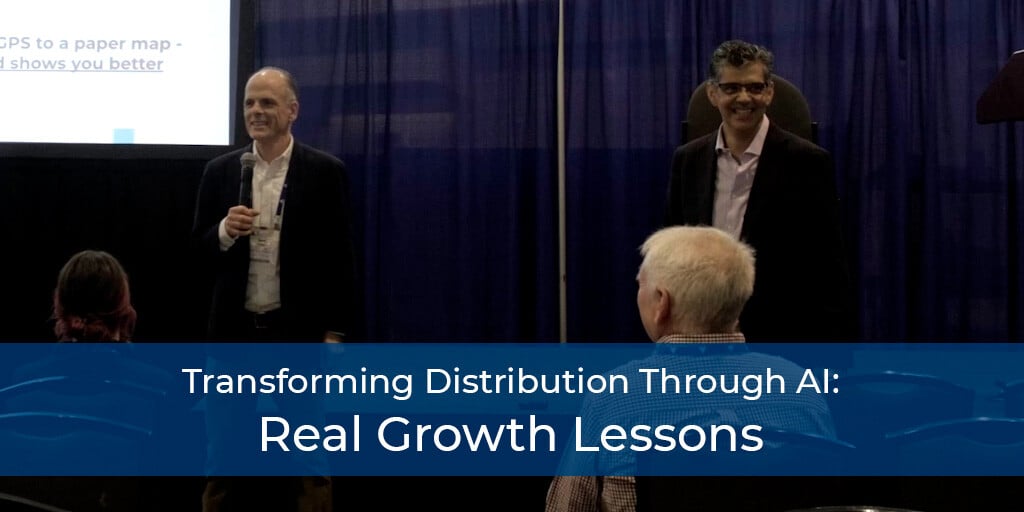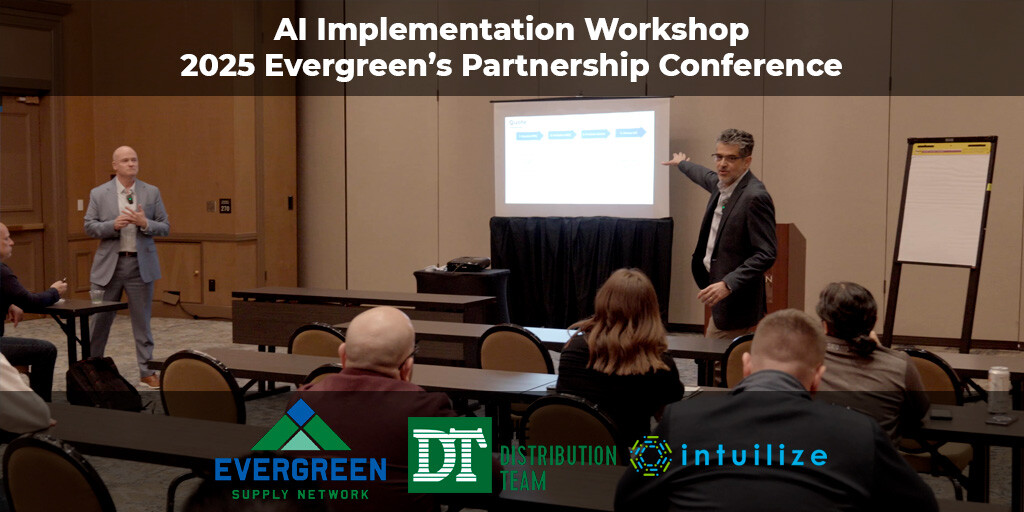
For years, distribution leadership has been a blend of industry experience, market intuition, and quick decision-making under pressure. The best executives trusted their gut—until AI came along.
Netflix CEO Reed Hastings once said that while the company heavily invests in data analytics, the ultimate decisions come down to Smart Intuition. While AI analyzes our viewing history to personalize recommendations and keep us glued to our screens, the final call on content strategy is always an informed gut decision.
Distributors are facing the same reality—constantly trying to predict how to convert a quote into an order by playing with millions of product, price, and quantity combinations.
Are we using Smart Intuition in distribution?
Like Hastings, distribution leaders understand the power of data, but perhaps hesitate to fully embrace AI due to the perceived complexity of integrating a new, unfamiliar technology. However, Smart Intuition starts with data—but the final call is always gut. It’s informed intuition.
How AI Empowers Smarter Leadership in Distribution
Distributors manage an overwhelming amount of data—inventory levels, pricing fluctuations, customer demand, supply chain disruptions. As markets become more complex, traditional methods struggle to keep up. AI, however, enables leaders to apply Smart Intuition with data-driven precision.
AI changes this by enabling leaders to:
1. Make Faster, More Informed Decisions
AI-driven systems analyze real-time data to uncover trends, identify risks, and recommend optimal courses of action. Instead of reacting to past performance, distribution leaders can anticipate challenges before they arise. Just as Netflix predicts what we’ll want to watch next, AI in distribution can forecast demand surges to prevent stockouts or over-purchasing.
2. Optimize Pricing Strategies for Maximum Profitability
Netflix adjusts subscription pricing and content strategies based on data-driven insights. Distributors can do the same. AI-powered pricing tools analyze historical sales data, competitor pricing, and market demand to recommend real-time pricing adjustments. Some distributors leveraging AI have seen up to a 7X ROI in the first year of implementation.
3. Automate and Streamline Procurement
Manual procurement processes are time-consuming and prone to human error. AI automates routine purchasing tasks, ensuring optimal stock levels based on demand. Just as Netflix automatically curates content recommendations, AI in distribution dynamically adjusts inventory strategies—freeing up teams to focus on more strategic initiatives.
4. Enhance Customer Relationships Through AI Insights
Netflix knows exactly why we binge-watch certain shows and tailors recommendations accordingly. AI-driven CRM tools allow distributors to analyze customer buying behavior, preferences, and engagement patterns, enabling sales teams to provide more personalized recommendations and improve retention.
5. Improve Cash Flow and Working Capital Management
AI doesn’t just optimize sales and inventory; it also strengthens financial health. By predicting revenue trends and optimizing procurement, AI helps distributors free up cash flow and reinvest in growth.
Leadership Strategies for Fostering an AI-Ready Culture
While AI’s benefits are undeniable, its success depends on how well leaders integrate it into their organization. AI isn’t just a plug-and-play solution; it requires strategic alignment, training, and cultural adoption. Here’s how leaders can create an AI-ready culture:
1. Lead with Data, Not Just Experience
Smart Intuition starts with data, but the final call remains human. AI doesn’t replace decision-making—it enhances it. Leaders must shift from intuition-based decisions to a mindset where AI-powered insights serve as a core driver of strategy.
2. Start with a Pilot Program
Netflix didn’t roll out AI-driven recommendations overnight. It started with test programs and refined them over time. Distributors should do the same. Identify a high-impact area—such as pricing optimization or inventory forecasting—and run a pilot program to demonstrate AI’s value before scaling.
3. Invest in Training and Upskilling
Just as Netflix executives needed to learn how to interpret AI-generated insights, distribution teams must also understand AI’s capabilities. Workshops, training programs, and hands-on experience with AI tools help employees build confidence in using AI for decision-making.
4. Build a Culture of Continuous Improvement
AI thrives in an environment where feedback loops exist. Encourage teams to monitor AI-driven recommendations, analyze their impact, and refine processes based on real-world outcomes. Set measurable goals, track success metrics, and iterate on AI strategies to maximize long-term benefits.
5. Align AI Initiatives with Business Goals
For AI adoption to succeed, it must directly support business objectives. Whether the goal is reducing costs, improving customer retention, or increasing profit margins, AI projects should align with strategic priorities. When employees see how AI contributes to the company’s success, they are more likely to embrace it.
The Future of Distribution Leadership Is AI-Driven—Are You Ready?
As AI reshapes decision-making in distribution, leaders who embrace data-driven strategies will gain a significant competitive edge. But the real question isn’t just about using AI—it’s about using it effectively. Where should you start? What processes should you automate first? And how can you ensure your people, processes, and technology are aligned for success?
📌 Download our new guide, How Distributors Can Simplify Operations with AI, to learn:
- A step-by-step framework for integrating AI across sales, customer relations, pricing, and inventory.
- How to align people, process, and technology for AI adoption.
- Real-world use cases showing how AI is driving measurable results for distributors.
- The key resources and tools you need to kickstart your AI journey.
AI isn’t just an advantage—it’s a necessity. Get the guide today and start making smarter, faster, and more profitable decisions.








